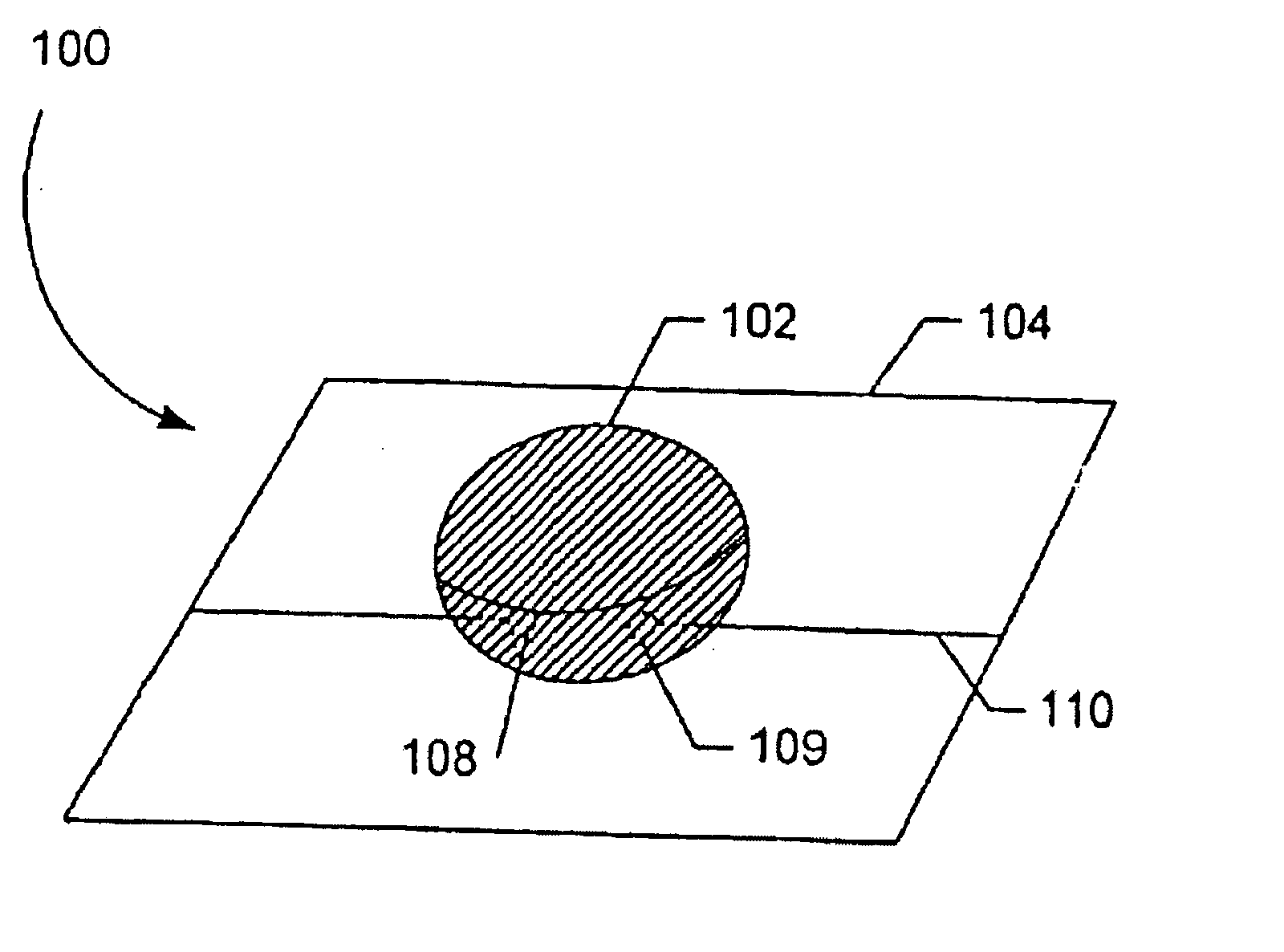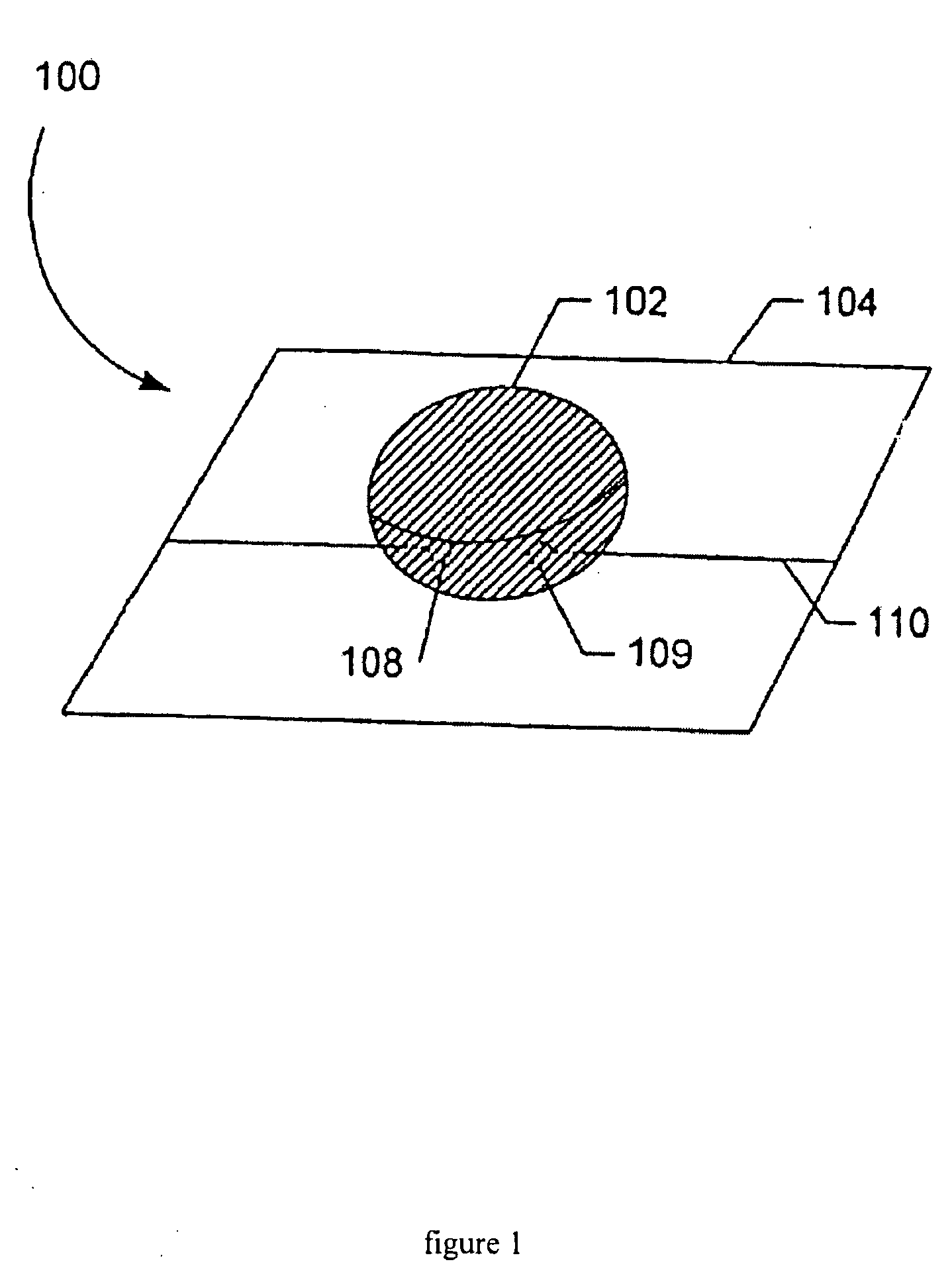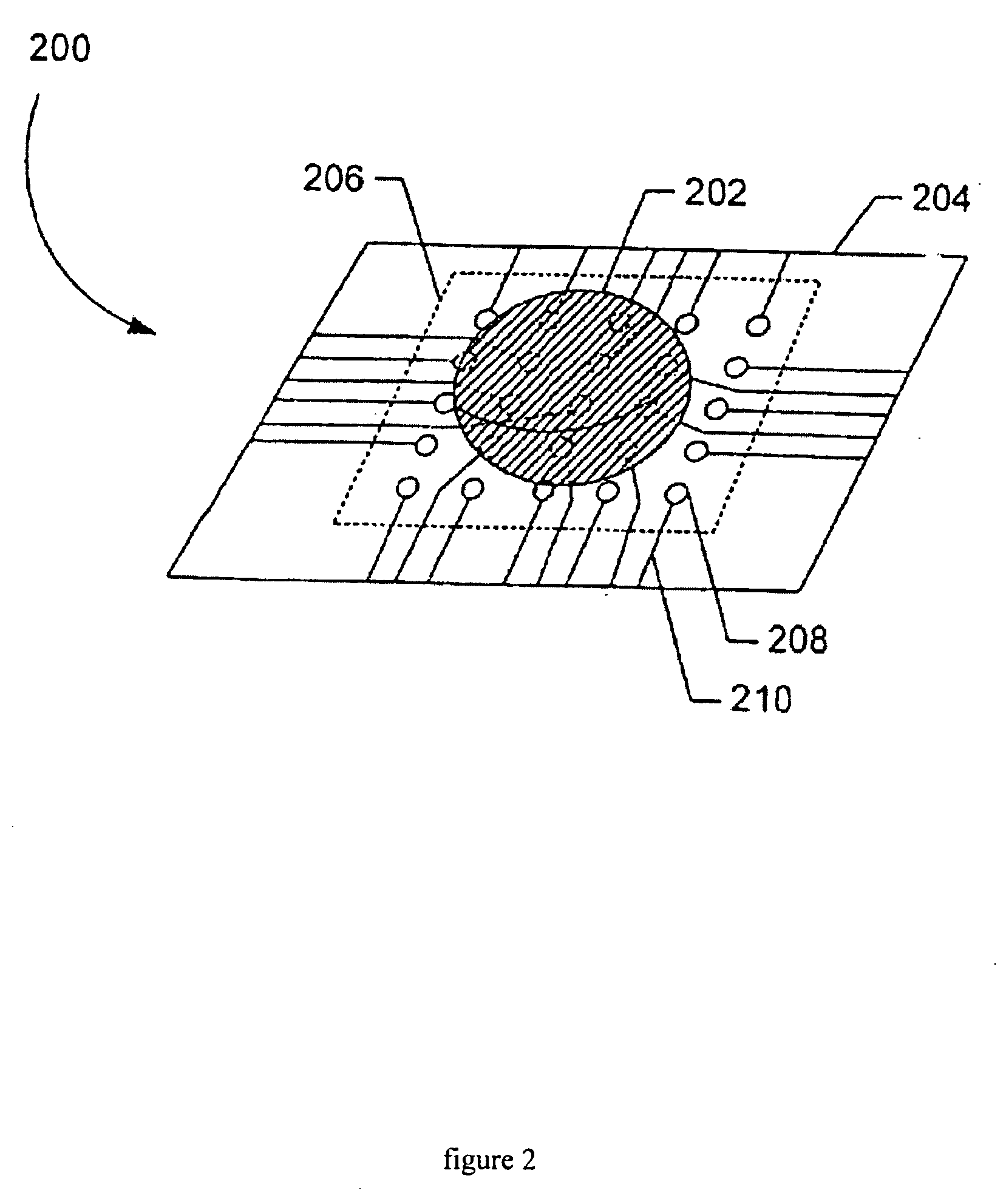Systems and methods for calibrating osmolarity measuring devices
a technology of osmolarity and measuring device, which is applied in the field of osmolarity measurement, can solve the problems of cornea ulceration, corneal perforation, and severe impact on the eye, and achieve the effects of improving the accuracy of osmolarity measurement and accuracy
- Summary
- Abstract
- Description
- Claims
- Application Information
AI Technical Summary
Problems solved by technology
Method used
Image
Examples
Embodiment Construction
.”
BRIEF DESCRIPTION OF THE DRAWINGS
[0015] Features, aspects, and embodiments of the inventions are described in conjunction with the attached drawings, in which:
[0016]FIG. 1 illustrates an aliquot-sized sample receiving chip for measuring the osmolarity of a sample fluid;
[0017]FIG. 2 illustrates an alternative embodiment of a sample receiving chip that includes a circuit region with an array of electrodes imprinted with photolithography techniques;
[0018]FIG. 3 illustrates another alternative embodiment of the FIG. 1 chip, wherein a circuit region includes printed electrodes arranged in a plurality of concentric circles;
[0019]FIG. 4 is a top view of the chip shown in FIG. 2;
[0020]FIG. 5 is a top view of the chip shown in FIG. 3;
[0021]FIG. 6 is a block diagram of an osmolarity measurement system configured in accordance with the present invention;
[0022]FIG. 7 is a perspective view of a tear film osmolarity measurement system constructed in accordance with the present invention...
PUM
| Property | Measurement | Unit |
|---|---|---|
| freezing point | aaaaa | aaaaa |
| volume | aaaaa | aaaaa |
| volumes | aaaaa | aaaaa |
Abstract
Description
Claims
Application Information
 Login to View More
Login to View More - R&D
- Intellectual Property
- Life Sciences
- Materials
- Tech Scout
- Unparalleled Data Quality
- Higher Quality Content
- 60% Fewer Hallucinations
Browse by: Latest US Patents, China's latest patents, Technical Efficacy Thesaurus, Application Domain, Technology Topic, Popular Technical Reports.
© 2025 PatSnap. All rights reserved.Legal|Privacy policy|Modern Slavery Act Transparency Statement|Sitemap|About US| Contact US: help@patsnap.com



